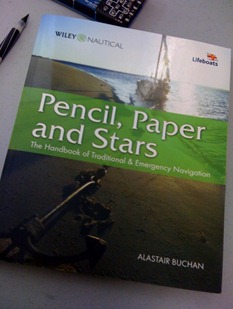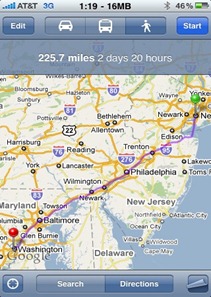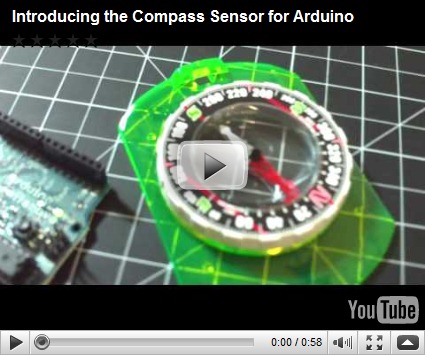The Compass Module is the latest joint project stemming from collaborative engineering between Liquidware and Modern Device.
On the bus ride from New York to Washington DC, it occurred to me how (relatively) easy it is to find our way from one place to another, regardless of distance. There’s a well designated interstate highway system, filled with signs and rest stops where I can easily find out exactly where I am.
Most drivers are privy to state-of-the-art GPS navigation systems that read directions aloud, in real time, like a captain who simply knows it all. As a passenger, I had my iPhone, which allows me to triangulate my location with impressive accuracy via cellular signals and cell tower positions. In fact, it even had line by line walking directions (it would take me almost 3 days) and a course automatically charted out for me in a matter of seconds.
I couldn’t help wondering how people traveled and *explored* in a time when not everything was clearly, accurately, and dynamically charted. Roads were probably not well labeled, if at all, and traveling across an ocean when you thought the world was flat was probably an endeavor filled with uncertainty. Even today, navigation is a much bigger deal at sea, where there are no roads, no landmarks, no signs, and no cell phone signals. And if for some reason my vessel is hit by an electromagnetic pulse, I’ll be left with nothing but Pencil, Paper, and Stars.

1. Macgyver’s compass
Without an actual compass handy, Macgyver might default to a tried and true 4th grade science experiment: making your own compass. The premise is simple: run one side of a magnet over a thin piece of metal (like a needle) several times, always in the same direction. This magnetizes the needle, which when pushed through a piece of cork or straw and placed in water, will be free to float and spin to point north. Caveat: the temporary magnetism diminishes over time and this procedure needs to be repeated every couple days.
2. Following the North Star
Following the stars has been a way of navigation on land and at sea for ages. Polaris, also known as the North Star, is useful because it is bright and holds a constant position at the celestial pole. Its location at the pole means that its position in the sky isn’t impacted by the daily rotation of the earth, making it a perfect landmark on a clear night.
3. Dead Reckoning and the Traverse Board
Making use of pencil and paper, dead reckoning and the traverse board are a method of tracking position traveled. Starting from a known position, a chip log or weight would be attached to a reel of rope with knots tied in it at pre-defined spaces (hence the term nautical “knots”). The speed of the boat would then be tracked by counting the number of knots that had passed over an interval of time. Combined with recordings of orientation with a compass, a crew could track the path of the boat.
4. Using a watch as a “Sun Compass”
Yet another way to determine North, especially during the day, was to hold a watch with the hour hand facing the sun. Bisecting the angle between 12 and the current hour creates a North-South line – the further of which is North.
5. Use an Arduino and a Compass Module
 Coming back into the digital world, here’s the Compass Module for the Arduino. Like the Temp Sensor, it comes as a kit with either 4-pin male or stack-through headers that sit directly on the Arduino analog pins A2-A5. The compass module library is included in the latest release of the Antipasto Arduino IDE, which has updates for the Temp Sensor library as well. To get started, I simply installed the updated IDE and ran the Arduino compass library to start getting directional heading readouts from serial.
Coming back into the digital world, here’s the Compass Module for the Arduino. Like the Temp Sensor, it comes as a kit with either 4-pin male or stack-through headers that sit directly on the Arduino analog pins A2-A5. The compass module library is included in the latest release of the Antipasto Arduino IDE, which has updates for the Temp Sensor library as well. To get started, I simply installed the updated IDE and ran the Arduino compass library to start getting directional heading readouts from serial.

The Compass also communicates over the I2C protocol, and the data pin is bidirectional. In fact, multiple sensor modules can be stacked to communicate over the same analog pins on the Arduino, which I’ll write up soon.
I took a video comparing the Compass Module with an analog compass, and lined both up for a quick demo:
Paul’s posted the Compass Module over at the Modern Device shop. In the meantime, I’m planning to do a couple more projects with the compass module next week, and I’m open to any thoughts or suggestions – jhuynh at gmail


No comments:
Post a Comment